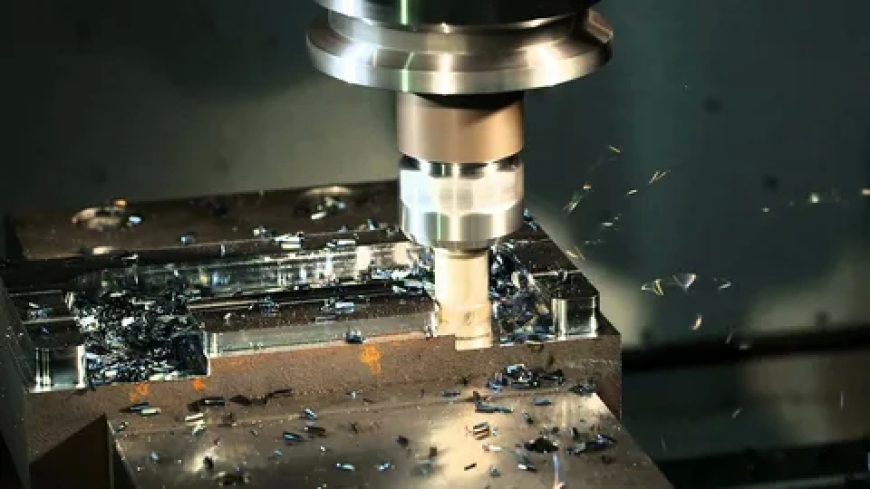How CNC Machining Techniques Improve Manufacturing Efficiency
This ability to quickly pivot between designs makes CNC machining an excellent choice for industries that require frequent product iterations or customization.

CNC (Computer Numerical Control) machining has become a cornerstone of modern manufacturing. With its precision, automation, and flexibility, CNC machining techniques have revolutionized how parts and components are produced across industries. Whether it's automotive, aerospace, medical, or consumer goods, CNC machining ensures that production runs faster, more accurately, and with less waste. In this article, we will explore how CNC machining techniques contribute to manufacturing efficiency by improving precision, reducing errors, lowering labor costs, and optimizing material use.
Enhanced Precision and Accuracy
CNC machining is renowned for its high level of precision and accuracy. Traditional manufacturing methods often rely on manual tools, which can be prone to human error, wear and tear, and inconsistencies. In contrast, CNC machines use computer programming to control the movements of the tool with remarkable accuracy. These machines can perform intricate cuts and complex shapes with minimal deviation, often achieving tolerances within micrometers.
The ability to maintain such high precision consistently not only improves the overall quality of the finished product but also reduces the need for rework. This reduction in errors leads to less material waste and fewer delays, contributing significantly to the efficiency of the manufacturing process. CNC machining techniques also allow manufacturers to produce high-quality prototypes, ensuring that products meet design specifications before they go into full-scale production.
Faster Production Times
One of the key advantages of CNC machining techniques is the speed at which parts can be produced. Once the design is programmed into the CNC machine, it can run continuously, producing parts without the need for frequent operator intervention. This is particularly beneficial for large-scale production runs where efficiency is crucial. The machines are capable of performing multiple tasks—such as cutting, drilling, and milling—within a single operation, minimizing the need for manual handling or switching between different machines.
By automating the production process, CNC machining techniques significantly reduce the time required to manufacture parts compared to traditional methods. The combination of high-speed operation and the ability to run multiple tasks without interruption helps manufacturers meet tight production deadlines and fulfill orders more quickly. As a result, businesses can improve their output, satisfy customer demand, and remain competitive in fast-paced industries.
Reduced Labor Costs and Human Error
CNC machining techniques are highly automated, which helps reduce the dependence on manual labor. While skilled operators are still needed to program and oversee CNC machines, the need for large labor forces to handle individual operations or perform repetitive tasks is minimized. This not only cuts down on labor costs but also reduces the risks of human error, which can be costly in traditional manufacturing environments.
The automation offered by CNC machines also allows for continuous production, even during off-hours, further reducing labor costs. With fewer human operators required for repetitive tasks, businesses can allocate resources to other areas, such as design and quality control, thus enhancing overall productivity. This streamlined workforce structure also enables companies to operate with fewer workers, which translates into cost savings and greater manufacturing efficiency.
Minimizing Material Waste
CNC machining techniques are designed to maximize the use of raw materials and minimize waste. Traditional manufacturing methods can lead to significant material waste, especially when parts need to be manually adjusted or when errors occur. CNC machines, on the other hand, follow precise instructions based on the digital design, ensuring that material is used efficiently and only the necessary amount is removed during the machining process.
Additionally, many CNC machines are capable of recycling scrap material, further reducing waste and making the process more sustainable. By improving material utilization, CNC machining reduces costs associated with purchasing raw materials, as well as disposal costs for leftover waste. This not only helps businesses become more cost-effective but also aligns with environmental sustainability goals, making CNC machining a preferred choice for eco-conscious manufacturers.
Flexibility and Customization
Another significant advantage of CNC machining techniques is their flexibility and ability to create custom parts. Traditional manufacturing methods often require specific tools or molds, making them less adaptable to changes in product design or production needs. With CNC machining, however, manufacturers can easily modify the design files and reprogram the machine to produce different components without the need for extensive tool changes or retooling.
This ability to quickly pivot between designs makes CNC machining an excellent choice for industries that require frequent product iterations or customization. Whether it’s producing a small batch of specialized components or making last-minute changes to a design, CNC machines allow manufacturers to meet these demands efficiently. The increased flexibility not only streamlines the production process but also improves the speed at which businesses can introduce new products to the market.
Conclusion
CNC machining techniques have transformed the landscape of modern manufacturing by offering unparalleled precision, speed, and flexibility. By reducing human error, cutting labor costs, optimizing material use, and enabling rapid design changes, CNC machining has become an indispensable tool in industries worldwide. As manufacturing demands continue to evolve, the importance of these techniques will only grow, making CNC machining an essential driver of efficiency and competitiveness. Embracing these advancements can lead to higher-quality products, faster turnaround times, and significant cost savings, ultimately positioning businesses for long-term success.
What's Your Reaction?
















![Tranquil Blend CBD Gummies [Price UPDATED 2024] - Cost Solves](https://news.bangboxonline.com/uploads/images/202412/image_430x256_676d404cc1dc0.jpg)









